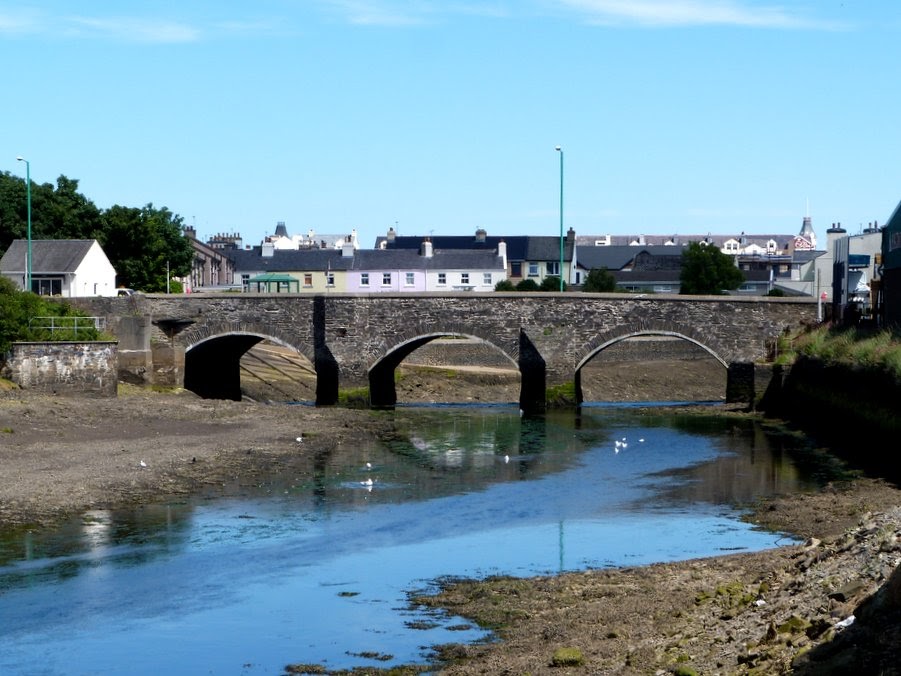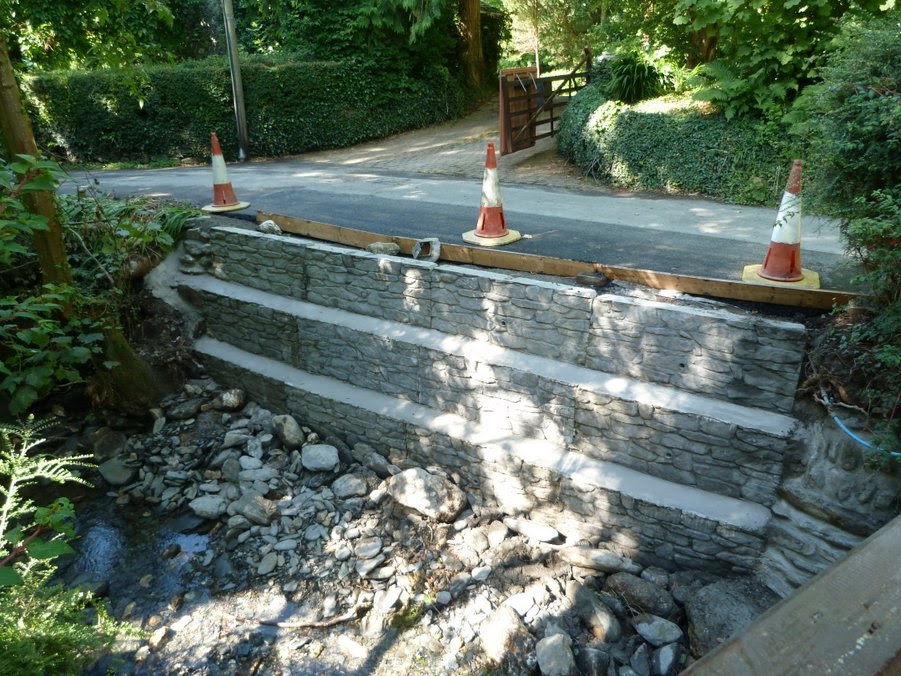Buses, birds and butterflies.
Sunday 31st July 2016
After a flurry of young goldfinches last week, they suddenly disappeared. The parents must have taken them to join the flocks which feed on the thistle seeds in the countryside. We didn’t see one goldfinch last Sunday and I thought they might have all deserted us - without even a "thank you for all the seed" - but one adult visited the feeder on Monday and I saw two on Wednesday. Since then one has been a regular visitor.
The week started with a couple of flower photos. A bright yellow hypericum and mauve erigeron.
We are still waiting for butterflies. There are flowers on the butterfly bushes (buddleia) but only the bumble bees are enjoying the nectar.
We went on an excursion on Monday - all the way to Douglas on the bus. The trip was inspired by a letter that Tim received from the TV people. He is entitled to a free licence because of his age but we are not in the Social Security system because we only moved to the Island after Tim retired. This results in complications and they occasionally need proof that he is still “alive and well and living near Ramsey”. Rather than drive in with the required documents, and deal with the usual road works and traffic, we decided to use our bus passes which entitle us to free travel on the buses during non-peak hours. So we drove into Ramsey and left the car in the Station Car Park (which now serves a supermarket because we no longer have a station). Actually that is wrong. I should have written “We no longer have a steam train station” . . . because we do have an electric tram station and a bus station.
Ramsey bus station.
We travelled to Douglas on one of these new Mercedes buses.
My previous bus trip was memorable because I travelled on one of the old red double deckers. There had been a landslip on the road near Laxey and the bus was diverted down the narrow roads through Old Laxey and eventually got stuck between some parked cars. It took some time to locate the owners and get the cars moved and then the bus started overheating. It decided to expire at Baldrine and we had to wait for the next bus to arrive before we finally got to Douglas. Thankfully Monday’s journey was completed without any hassles.
We had a few minutes to spare before our return journey to Ramsey so I wandered down to the river to photograph the boats.
Then I decided that the flower displays near the bridge were more interesting than the boats!
While we were walking back from the bus to our car in Ramsey, I accidentally stole a weed. I had been admiring this weed for some time. It looked exactly like the purple toadflax - which is seeding itself all over our garden and is very popular with the bees - but the flowers were a pretty pale pink. I looked it up in my wild flower book and read that it is Linaria purpurea and that the flowers are bright violet, occasionally pink. I had considered waiting until it died back and taking some seed but I thought seedlings might just revert to the purple colour. So I decided on the spur of the moment to try to pull out a small rooted stem.
The pink purple toadflax was growing through a stone mulch outside the filling station next to some of its purple cousins, and assorted ragwort, willowherb and dandelions. I gave one stem a gentle tug and was horrified when the the whole plant came out. I quickly stuffed it into my shopping bag and hoped that nobody had noticed and consoled myself with the thought that it wasn’t a particularly bad crime and the weeds would probably have eventually been sprayed with weedkiller.
The ill gotten plant is now safe in a pot of compost and I took a photo of the pink flowers to compare with the purple ones.
I have just remembered that the original purple toadflax was also stolen. There was a patch under a tree in the park at Poyll Dooey a few years ago and when we were walking there I saw that someone had strimmed some of the plants which were spreading into a path. So I pulled out a small piece and brought it home.
The experiment of rooting rosemary cuttings in water has been a success. The first little rooted cutting was planted in a pot of compost on Monday afternoon. It was only ten days ago that I put the cuttings in water.
On Tuesday I tidied up outside the gate - trimmed the wild flowers and removed some weeds - and then caught up with the laundry.
Wednesday
It was a lovely sunny morning and I took a max zoom photo of a “juvenile robin” sunbathing on the back lawn near the senecio. When I saw the photo on the computer I realised that the “robin” was a wren. I had never seen a wren sunbathing before.
We took a load of garden refuse to tip and when we got back I noticed a butterfly, which might have been a red admiral, sunbathing near the senecio. I went out with my camera but the butterfly had disappeared. Then I saw a lovely little holly blue feeding on the oregano. I could only see the blue upper side of the wings when it was in flight so I had to be content with an underwing photo.
Then I spotted the red admiral up at the top of the big white buddleia and accidentally took a photo of a bumble bee in flight as well as the butterfly.
But that wasn’t the end of the butterflies. I counted at least four meadow browns on the wildflower bank. Then down near the house I saw a comma resting on a blackcurrant leaf. It was rather a tatty specimen but I took some photos and then it was approached at speed by another comma and they both shot off into the next garden.
After lunch we went for a short walk to inspect the road works and when we returned home I went up onto the patio above the garage to see whether there were any butterflies on the purple buddeia - there were three small tortoiseshells!
Thursday was a wash out. It was devoted to very belated spring cleaning because it rained nearly all day.
On Friday the grass was still too wet to mow so I cut back 3 muck buckets of foxgloves and sundry other unsightly old growth. I also spent ages watching a couple of young robins and a wren who seemed to be competing for control of the prime sunbathing territory up by the senecio. I got a photo of a robin and the wren briefly sharing the favoured spot.
Then I saw the first peacock butterfly of the season up by summerhouse There is a huge contrast between the very dark underwing and the brightly coloured upper side of the wings.
On Saturday I mowed the grass which was still rather damp. When I had finished I went to check for butterflies on the purple buddleia. There were two - a peacock and one which I didn’t recognise. It looked rather like a dark green fritillary and I got very excited thinking it was a new butterfly in the garden. But after checking my book and the photos on the internet, I realised that it was a dark green fritillary. It was just a rather threadbare female. Apparently the females are paler than the males even when they are in good condition.
This morning I cut back another two muck buckets of foxgloves and weeds and took a photograph of a japanese anemone so that I could end the week with another flower.

























































